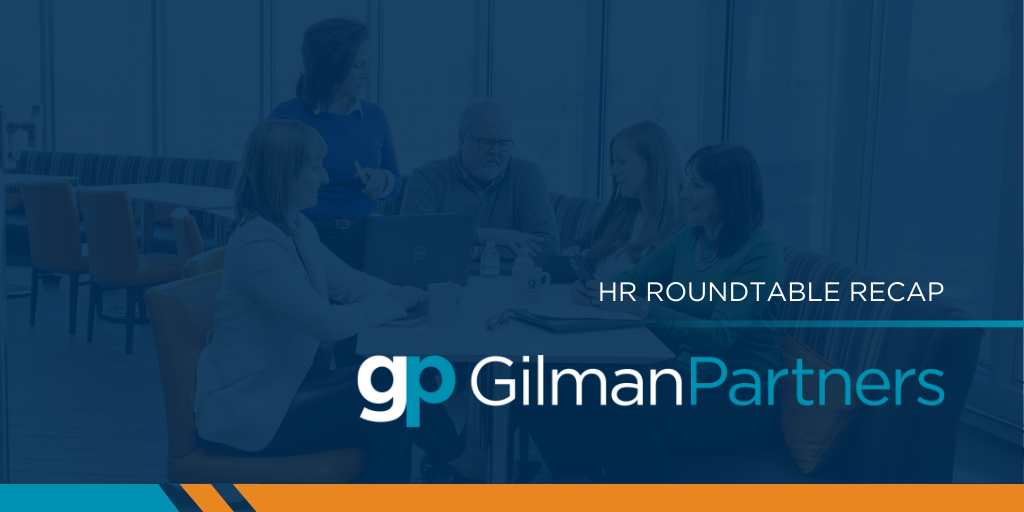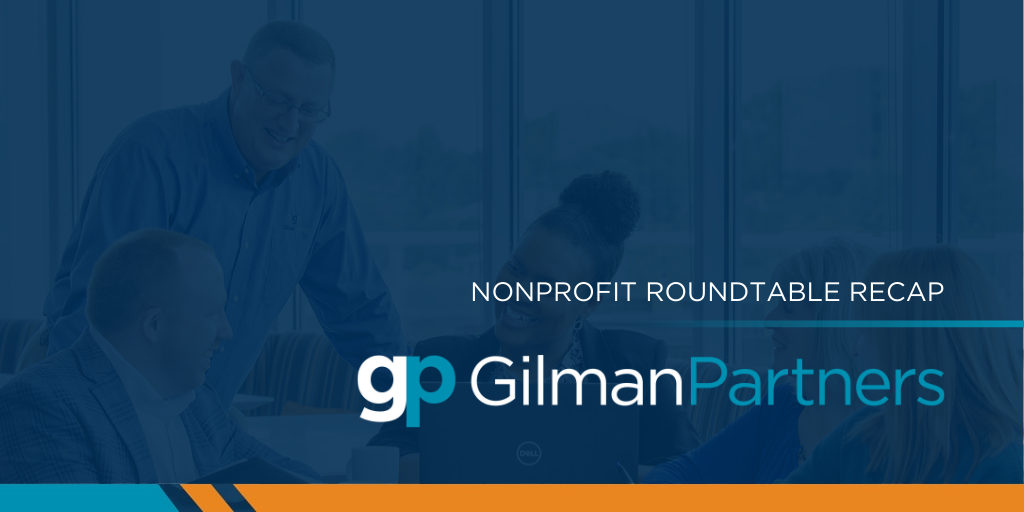This morning Gilman Partners hosted a roundtable discussion with emerging leaders to talk about trends in attracting and retaining talent. Here are some of the highlights from our conversation:
- As flexible work schedules become more accepted—and expected—in the workplace, many organizations are struggling to determine how best to structure and manage that flexibility. Our group talked about setting expectations for employees as well as having infrastructure and communication tools available so all workers feel engaged and in the loop.
- Organizations of all types are being more proactive in their recruitment efforts. One nonprofit leader talked about interviewing high-potential individuals regularly, even when her organization doesn’t have a position open, so they can keep a pool of talent available. Another leader mentioned she is very upfront about communicating the challenges candidates might face within their roles and the organization in order to weed out those who might not be a good fit.
- Our group talked about the effects a narrowly defined culture can have on attracting and retaining diverse employees. Retention bonuses are one strategy to bring in new workers, but can lead to a more homogenous workforce since employees often recommend individuals similar to themselves.
- Several leaders talked about the many ways to define diversity in the workforce and one nonprofit leader noted her organization specifically trains front-line supervisors on the importance of diverse skill sets, backgrounds, certifications and experiences of their workforce and how to take advantage of them.
- Because today’s workforce is made up of people from five different generations, our group of emerging leaders talked about generational differences and strategies for getting everyone on the same page and moving toward a common goal. One leader shared that his organization strategically pairs employees of different functions and generations to help increase understanding, empathy and connections.




